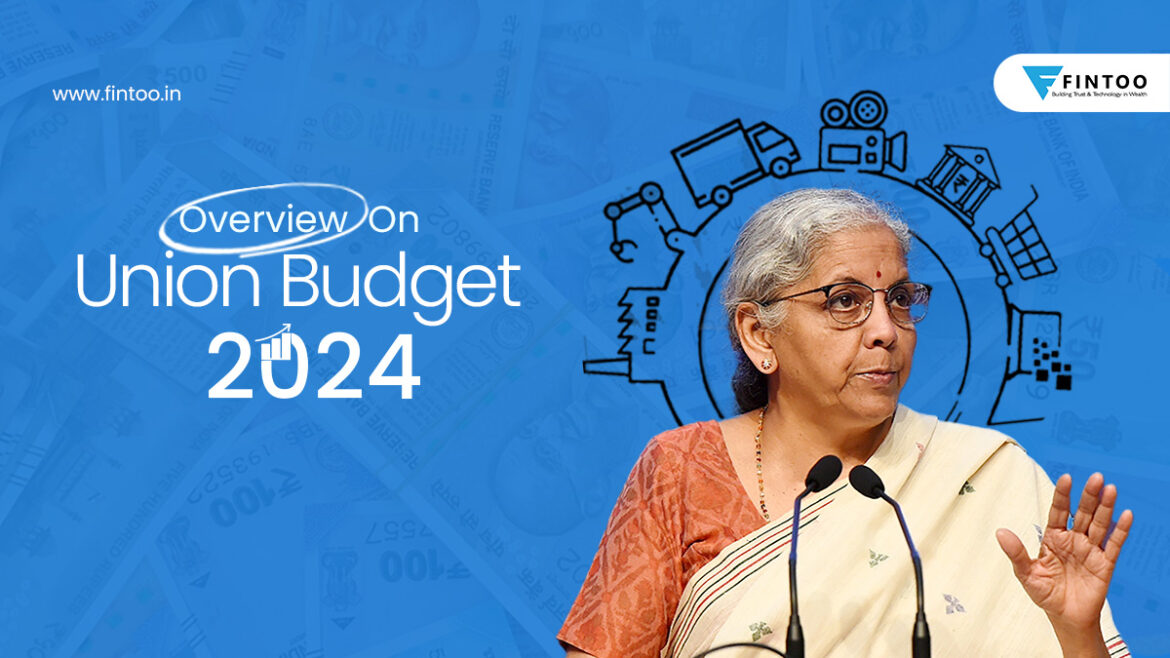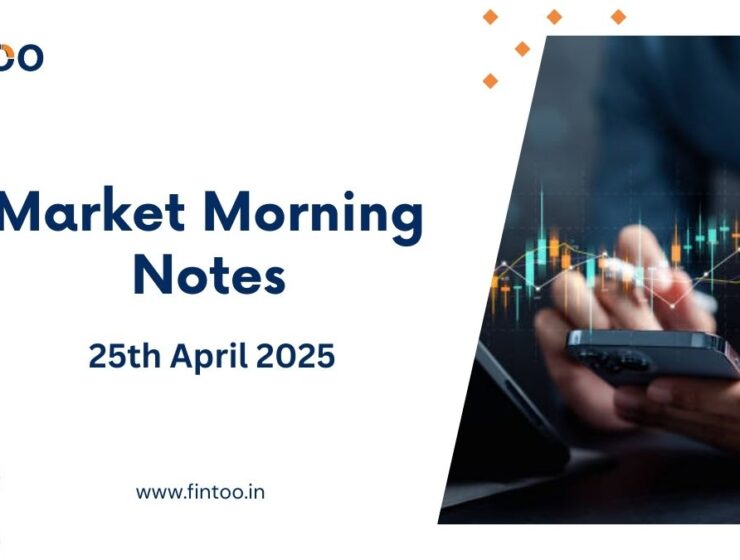

Finance Minister Smt Nirmala Sitharaman introduced the Interim Budget 2024-25 in Parliament on Thursday, February 1, coinciding with the commencement of the Budget Session. This budget holds significance as it is an interim one, being presented just before the Lok Sabha Elections. The budgetary allocations and policy directions reflect a strategic approach toward fostering growth, social inclusion, and sustainability. Let’s explore the key highlights that emerged from the diverse spectrum of announcements.
Education for Empowerment
The government’s robust commitment to education manifests in the establishment of seven new Indian Institutes of Technology (IITs), sixteen Indian Institutes of Information Technology (IIITs), seven Indian Institutes of Management (IIMs), fifteen All India Institutes of Medical Sciences (AIIMS), and an impressive 319 universities. This strategic allocation of resources underscores the administration’s recognition of education as a cornerstone of sustainable national development
Nari Shakti in the Spotlight
The Budget places a significant emphasis on women’s empowerment, evidenced by several key milestones:
- Disbursal of 30 crore Mudra Yojana loans to women entrepreneurs, fostering financial independence.
- A commendable 28% increase in female enrollment in higher education over the past decade, promoting gender inclusivity.
- 43% of female enrollment in Science, Technology, Engineering, and Mathematics (STEM) courses, aims to bridge gender gaps in specialized fields.
- Support for one crore women through 83 lakh Self-Help Groups (SHGs), facilitating their journey to financial independence as Lakhpati Didis.
Environmental Commitment
To align with the ‘net-zero’ target by 2070, the government plans the phased blending of biogas in CNG and extends support for harnessing offshore wind energy. This reflects a dual commitment to environmental sustainability and energy security.
Empowering Homes with Solar Energy
A groundbreaking initiative introduced in Budget 2024 is the provision of free electricity to one crore households through the rooftop solar program. This initiative is a response to immediate energy needs and signifies a forward-looking commitment to sustainable energy practices.
Fiscal Realignment
The fiscal strategy involves revising the divestment target for FY24 to Rs 30,000 crore and setting a target of Rs 50,000 crore for FY25. The emphasis on divestment aims to enhance efficiency and resource utilization. The updated projection for the fiscal deficit is 5.8% of the GDP, with a targeted fiscal deficit of 5.1% of the GDP for FY25.
Tax Reforms and Economic Stability
Key announcements related to tax reforms and economic stability include:
1. Consistency in Tax Structures:
The government has exhibited a steadfast commitment to maintaining the stability of the tax landscape. Key highlights include:
- Retaining existing tax rates for both direct and indirect taxes.
- No alterations in income tax slabs, ensuring continuity and predictability for individual taxpayers.
- A strategic decision to sustain the Goods and Services Tax (GST) structure, providing a streamlined and consistent taxation framework for trade and industry.
2. Extended Support for Start-Ups
Recognizing the pivotal role of startups in driving innovation and economic dynamism, the Budget extends crucial support:
- Tax benefits for startups extended until March 31, 2025, fostering a conducive environment for entrepreneurial ventures.
- No changes in tax rates for companies, Limited Liability Partnerships (LLPs), or any other entities, ensuring a conducive tax regime for businesses of all scales.
3. Holistic Approach to Taxpayer Services
The Budget has a strong focus on enhancing taxpayer services, addressing historical concerns and fostering financial inclusivity:
- Withdrawal of direct tax demands for a period up to ₹25,000 for the fiscal year 2009-10 and ₹10,000 for the fiscal year 2014-15.
- This benevolent measure is set to benefit approximately 1 crore taxpayers, providing them with much-needed financial relief.
4. Consistent Tax Rates
- No changes in Direct and Indirect Tax rates.
- Corporate tax is maintained at 22% (existing) and 15% (new manufacturing).
- No tax for income up to ₹7 lakh in the new regime.
- Income Tax Return processing time was reduced to an average of 10 days down from an average of 93 days in 2014.
5. Notable Economic Achievements
The Finance Minister presented a snapshot of the nation’s economic landscape, showcasing impressive achievements:
- The average real income has grown substantially, marking a remarkable 50% increase.
- The capex target for FY25 stands at an ambitious Rs 11.1 lakh crore, reflecting a substantial 11.1% surge.
- FY25 capex outlay, constituting 3.4% of the GDP, signifies a strategic investment in critical sectors to propel economic growth.
6. Stimulating Private Sector R&D
In a groundbreaking move to invigorate private sector research and development (R&D), the government has introduced a visionary initiative:
- A corpus of Rs 1 lakh crore will be made available with a 50-year interest-free commitment, fostering long-term financing or refinancing for private entities.
- This substantial fund aims to incentivize and propel significant advancements in R&D, particularly in emerging and sunrise domains.
In essence, the tax reforms and economic measures outlined in Budget 2024 reflect a nuanced approach, balancing stability, support for startups, enhanced taxpayer services, and a visionary investment in research and development. These strategic initiatives set the stage for a resilient and dynamic economic future for India.
Also read: No change to direct and indirect tax rates: Finance Minister in Budget Speech
Agricultural and Dairy Reforms
The budget prioritizes agricultural and dairy development with strategies for achieving Atmanirbharta in oilseeds and comprehensive support for dairy farmers. Additionally, the expansion of successful initiatives like Nano Urea and Nano DAP is announced. These measures aim to fortify the agricultural sector and ensure the well-being of those engaged in it.
Social Welfare and Inclusion
The government continues its commitment to social justice and inclusion:
- The successful implementation of schemes like PM Kisan Samman Yojana, PM SVANIDHI, PM JANMAN Yojana, and more, reach out to marginalized sections and vulnerable tribal groups.
- Initiatives such as making triple talaq illegal and providing housing under Awas Yojana to women in rural areas demonstrate a commitment to social welfare.
Also read: Budget 2024 Date, Time and Expectations
Budget and Impact
1. Defence
- Proposal
> Rs. 6.21 trillion allocated to defence ministry for FY25E, 4.72% more than FY24
>Rs 1.72 trillion allocated for defence capital capex up by ~9.4% YoY.
> Rs.238 bn allocated to Naval Fleet, Rs. 68.3 bn allocated towards Naval/Dockyard Projects.
- Impact
>Defense hardware manufacturers are expected to get a significant part of capital expenditures, including defense offset orders.
>Shipyard companies may get large orders in naval ship repair and building.
> Defense O&M companies have the chance to build a significant Operation and Maintenance book.
2. Infrastructure
- Proposal
> Rs. 213.3 bn allocated towards metro rail projects up by 9%.
> Rs. 50 bn allocated towards Swachh Bharat Mission, up by 96%.
> Pradhan Mantri Ayushman Bharat Health Infrastructure Mission allocated Rs. 21.3 bn.
- Impact
>The Swachh Bharat Mission will emphasize the development of water and sewage treatment plants. Waste management, water treatment will benefit.
>Upgrading health infrastructure will include the establishment of new hospitals, medical colleges, and other health facilities.
> Sagarmala projects are poised to boost port infrastructure development.
3. Power Infrastructure
- Proposal
>The Green Energy Corridor, focusing on transmission line projects for renewable power assets, has experienced a 38% budget outlay increase over the Estimated Revised (FY24E RE).
- Impact
>The elevated allocation for Renewable Energy Development and Security System (RDSS) is expected to be advantageous for power equipment manufacturers and Engineering, Procurement, and Construction (EPC) contractors.
4. Clean Energy
- Proposal
>10 mn households to obtain 300 units free electricity every month through rooftop polarization.
>Viability gap funding will be provided for harnessing offshore wind energy potential for initial capacity of 1 GW
>Coal gasification and liquefaction capacity of 100 MT to be set up by 2030.
>Phased mandatory blending of compressed biogas (CBG) in compressed natural gas (CNG) for transport and piped natural gas (PNG) for domestic purposes.
>Financial assistance will be provided for procurement of biomass aggregation machinery to support collection.
> Rs. 6 bn allocated towards National Green Hydrogen Mission.
- Impact
> Greater adoption of green energy and reduced dependency on non-renewable sources.
> Solar panel manufacturers, Power transmission and distribution companies will benefit from PM Suryoday Yojana.
5. Electronic Manufacturing
- Proposal
>Rs. 69 bn allocated in FY25E towards Development of Semiconductors and Display Manufacturing Ecosystem in India.
> PLI for electronics has seen uptick by 36% to Rs. 62 bn
- Impact
> It will aid in establishing and nurturing the Electronics Manufacturing ecosystem.
6. Railways
- Proposal
>40,000 normal rail bogies to be converted to Vande Bharat standards.
> Allocation toward the railway budget increased to Rs. 2.55 trillion in FY2%E.
>3 major economic railway corridor programmes identified ((i) Energy, Mineral and Cement corridor (ii) Port connectivity corridors (iii) High traffic corridors) under the PM Gati Shakti to be implemented to improve logistics efficiency and reduce cost.
- Impact
> Infrastructure EPC companies are poised to gain benefits.
> Anticipated to generate demand for capital goods.
7. Housing
- Proposal
> 2cr more houses to be built in 5 years.
> PMAY budget increased by 49% in FY25E.
- Impact
> Real estate companies will see housing demand
> Demand for capital goods, plywood, steel, cement, ceramics will increase
8. Agriculture, Matsya Sampada
- Proposal
>Pradhan Mantri Matsya Sampada Yojana (PMMSY) will be stepped up to enhance aquaculture productivity from existing 3 to 5 tons per hectare, double exports to Rs. 1 trillion. 5 acquapark will be set up
> A comprehensive programme will be built on the success of existing schemes such Rashtriya Gokul Mission, National Livestock Mission, and Infrastructure Development Funds for dairy processing and animal husbandry.
- Impact
> Boost income of the farmers.
> Aqua, fisheries, and shrimp-feed will benefit.
9. Pharma, Healthcare and chemical
- Proposal
> Rs. 901 (~2% of GDP) allocated to health expenditure for FY25E
> Increased outlay in Development of the industry scheme to Rs. 13 bn for FY25E.
>Outlay to Pharma PLI scheme increased to Rs. 21.4 bn for FY25E against Rs. 16.9 bn for FY24E.
- Impact
> To help the API industry by setting up bulk parks and reducing manufacturing cost.
>To bolster India’s manufacturing capabilities by amplying investments and expanding production in the Pharma sector.
10. Financial Sector
- Proposal
> Capex target raised by 16.8% to Rs. 11.1 trillion. It will help the finance sector in the form of lending.
> Government will launch a scheme to help deserving sections of the middle class living in rented houses, or slums, or chawls and unauthorized colonies to buy or build their own houses. The allocation for PMAY rose by 49% to Rs. 806 bn.
> NBFC-IFCs – Viability gap funding will be provided for harnessing offshore wind energy potential for initial capacity of 1 GW.
- Impact
>The robust pipeline of solar and wind power projects is expected to benefit NBFC focus on infrastructure financing.
>Capex driven spending is expected to be a catalyst for credit growth in the Financial System.
>The anticipated decrease in government borrowings is expected to empower banks to increase lending, driven by improvement in overall liquidity.
Vision for the Future
Smt Nirmala Sitharaman underscores the government’s commitment to a developed India, articulating a vision for Vikasit Bharat by 2047. The focus remains on the holistic development of the country, leaving no section behind.
As Budget 2024 unfolds a comprehensive roadmap for India’s future, bridging economic pragmatism with a dedication to social welfare and environmental sustainability, Fintoo is thrilled to present an engaging webinar on “Decoding the 2024- Budget with Experts” to gain deeper insights into the budget’s implications with a thorough discussion on sectoral impacts.
Date & Time: February 3, 2024, at 11:30 AM IST/ 10:00 AM GST
Join our esteemed experts for an insightful webinar:
1. Mr Ramkumar K M (Product Head at HDFC AMC)
2. Ms. Nisha Harchekar (Head of Equity, Fintoo)
3. Mr. Mihir Shah (AVP – Wealth, Fintoo)
Explore a thorough discussion on sectoral impacts and gain an insightful analysis of the equity market against these transformative budgetary measures.
Don’t miss out on the opportunity to gain valuable insights from the experts. Click the link to Register now!
Disclaimer: The views shared in blogs are based on personal opinions and do not endorse the company’s views. Investment is a subject matter of solicitation and one should consult a Financial Adviser before making any investment using the app. Making an investment using the app is the sole decision of the investor and the company or any of its communication cannot be held responsible for it.
Related Posts
Stay up-to-date with the latest information.


